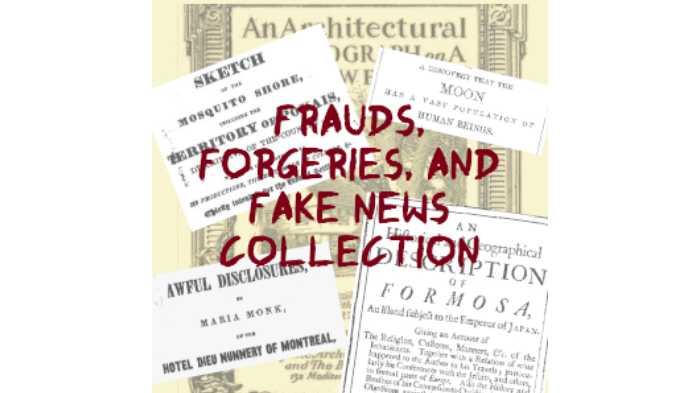This anthology serves as a captivating showcase, unveiling a myriad of crafted documents and narratives that have woven themselves into the annals of history, each bearing their own distinctive purposes and contexts, strategically wielded to elicit a specific response.
The narrative journey embarks with the “Awful Disclosures of the Hotel Dieu Nunnery of Montreal,” a masterfully concocted account that surfaced in 1836. Crafted as an anti-Catholic exposé, this fabricated eyewitness testimony purported to unveil the nightmarish realities of life within a convent, leaving an indelible mark on public discourse.
From there, we delve into the intricacies of the “Donation of Constantine,” a falsified decree that claims to transfer perpetual authority over the western expanse of the Roman Empire from the emperor to the Pope—an artful ruse that significantly impacted the power dynamics of the time.

Our journey then intersects with George Psalmanazar, a chameleon-like figure who assumed the identity of a Formosan native, skillfully authoring a fantastical account of his homeland that both intrigued and mystified the 18th-century London crowd.
The narrative horizon expands with the “Great Moon Hoax,” a captivating series of lunar descriptions published in the 1830s, falsely attributed to the esteemed astronomer Sir John Herschel, igniting the imagination of a populace fascinated by the enigma of the celestial bodies.
Within these pages, the legendary Bram Stoker unfurls the tale of Sebastian of Portugal, the enigmatic “Hidden King,” and recounts the narrative of Franz Mesmer, the progenitor of “animal magnetism” that bestowed upon the lexicon the term “mesmerize.”
As the anthology evolves, it introduces us to an architectural enigma—”An Architectural Monograph on a New England Village.” Meticulously detailed and illustrated, this description captures the essence of a village that, paradoxically, existed solely within the realm of imagination.
The journey continues with James Macpherson’s portrayal of the Poems of Ossian, presented as an authentic cycle from Scottish Gaelic tradition, yet cloaked in speculation and controversy regarding its true authorship.
E. G. Redmond then unfolds a stamp-related charade, sharing the tale of a hoax born from the ingenuity of a German stamp collector, marking the commencement of a whimsical and bewildering journey through philatelic history.
And finally, the narrative concludes with the “Sketch of the Mosquito Shore,” an artfully fabricated account of the Central American coastline. Laden with allure, this narrative offers the tantalizing prospect of land acquisition from the author himself.
As each tale intertwines with history’s tapestry, this collection proclaims itself not merely as a repository of falsehoods, but as a testament to the intricate interplay of human imagination, deception, and the multifaceted motives behind these masterfully crafted documents.
 Skip to content
Skip to content








